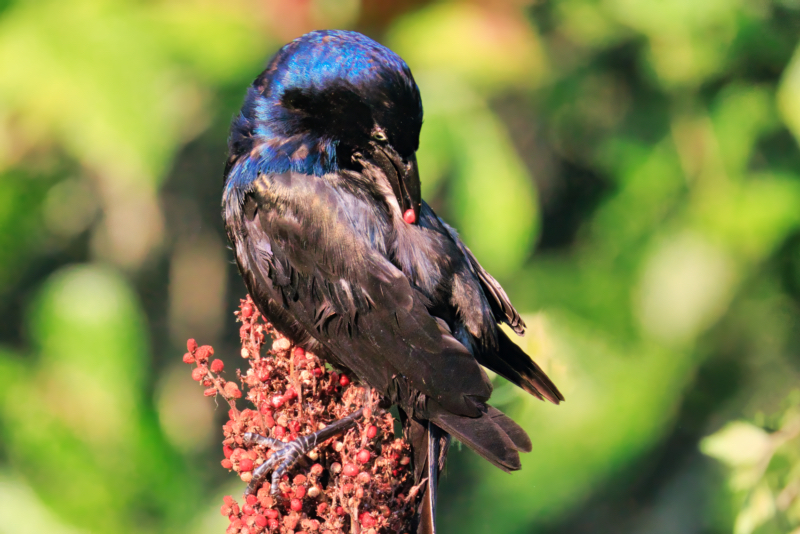I recently witnessed a peculiar sight at the Sequoyah National Wildlife Refuge that left me scratching my head. A grackle had perched itself on Sumac, holding a bright red sumac berry in its beak. It was vigorously rubbing the berry against its feathers. As I continued observing, I noticed several more grackles joining in, each taking turns rubbing sumac berries held in their beaks across their plumage. What was going on here?

A Perplexing Pastime Called Anting
After doing some research, I learned this ritual is called “anting” – where birds apply insects and other items like ants, beetles, and citrus to their feathers and skin. The acids and secretions from these creatures act as insecticides and fungicides to help preen and protect their plumage. While anting itself wasn’t new to me, seeing grackles partake with sumac berries was quite unexpected.
The Sumac Surprise
While ants are the conventional choice, it turns out grackles and other birds often get creative with their anting ingredients. Sumac berries contain tannins and oils that could help condition their feathers. Other anting options include mealworms, coffee grinds, vinegar, and even soapsuds. Who knew birds had such discerning tastes when it came to preening products?
Capturing a Moment in Time
I was able to capture the grackles’ intriguing anting ritual thanks to my camera set up and ready to go near the sumac tree. The scene unfolded along the auto tour road within the wildlife refuge, specifically near the Sandtown Bottoms area. Witnessing these clever birds and their resourceful grooming methods made for a truly memorable morning. The grackles’ sumac rubdown is a unique wildlife encounter I won’t soon forget.
Gear Used:
- Camera: Canon EOS R5
- Lens: Canon EF 800 mm f/11
Technical:
- Location:Sequoyah National Wildlife Refuge (Oklahoma)
- Date and Time Taken: July 31, 2021 (8:07 A.M.)
- Exposure Mode: Manual
- Aperture: f11 (Fixed)
- Shutter speed: 1/1250
- ISO: 8000 (Auto)
- Focal Length: 800 mm (Fixed)
